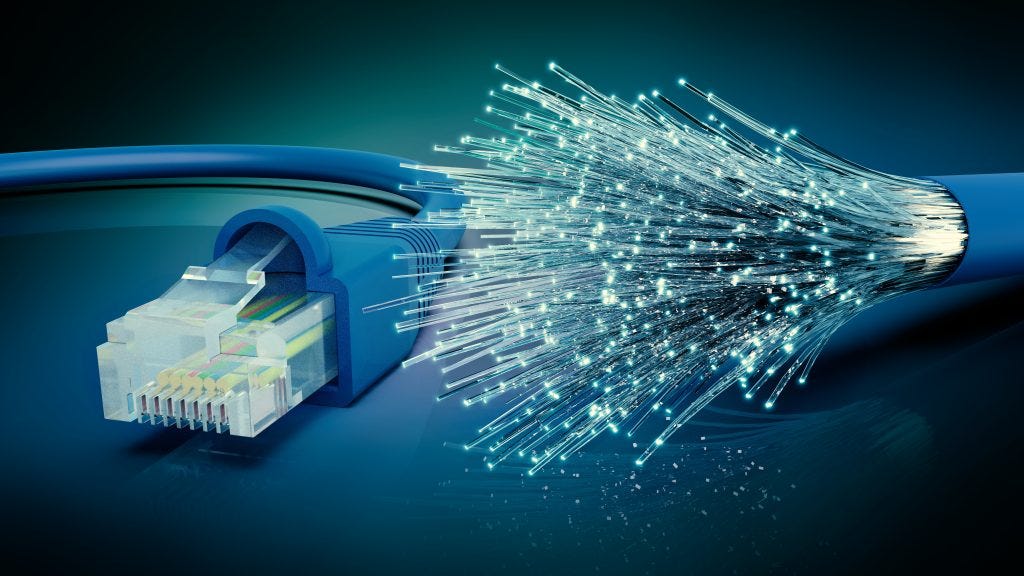In the modern digital age, reliable and efficient communication networks are essential for businesses to operate smoothly. Structured cabling and fiber optics form the backbone of these networks, providing the infrastructure necessary for high-speed data transmission, robust communication systems, and seamless connectivity. This comprehensive guide explores the principles, benefits, and applications of structured cabling and fiber optics, offering valuable insights into their importance in contemporary business environments.
Structured cabling and fiber optics are essential components in ensuring reliable and high-speed network performance, which are critical for the operations of any security company. By implementing robust cabling solutions, a Milwaukee security company can maintain seamless connectivity and enhance the overall security infrastructure, ensuring real-time monitoring and efficient communication.
Understanding Structured Cabling
Structured cabling refers to a standardized system of cabling and associated hardware that provides a comprehensive telecommunications infrastructure. This infrastructure supports a wide range of applications, including data transmission, voice communications, and video services. Structured cabling systems are designed to be versatile, scalable, and future-proof, making them an ideal solution for businesses of all sizes.
Key Components of Structured Cabling
- Horizontal Cabling: This includes the cabling that runs from telecommunications rooms to individual workstations or devices. It typically consists of twisted pair cables (Cat 5e, Cat 6, or Cat 6a) or fiber optic cables.
- Backbone Cabling: This refers to the inter-building or intra-building cables that connect telecommunications rooms, equipment rooms, and entrance facilities. It often involves higher-grade cables, such as fiber optics, to support high data volumes.
- Telecommunications Rooms: These are spaces within a building where telecommunications and network equipment are housed. They serve as the central points for connecting and managing horizontal and backbone cabling.
- Work Area Components: This includes the connectors, cables, and outlets that connect end-user devices, such as computers and phones, to the structured cabling system.
- Patch Panels and Cross-Connects: Patch panels and cross-connects are used to organize and manage the connections between different segments of the cabling system. They provide flexibility in configuring and reconfiguring the network.
Benefits of Structured Cabling
Structured cabling systems offer numerous advantages, making them a preferred choice for businesses seeking reliable and efficient network infrastructure.
Simplified Management
Structured cabling systems are designed to be organized and easy to manage. The use of standardized components and installation practices ensures that the cabling is neat, organized, and easy to maintain. This simplifies troubleshooting and reduces downtime, as issues can be quickly identified and resolved.
Scalability and Flexibility
One of the key benefits of structured cabling is its scalability. As businesses grow and their networking needs evolve, structured cabling systems can be easily expanded and upgraded. This flexibility allows businesses to add new devices, users, and applications without major disruptions or costly overhauls.
Cost-Effectiveness
Although the initial installation of a structured cabling system may require a higher investment, it offers significant cost savings in the long run. The reduced need for maintenance, troubleshooting, and upgrades, combined with the efficiency and reliability of the system, leads to lower operational costs over time.
Future-Proofing
Structured cabling systems are designed to support current and future technologies. By investing in a robust cabling infrastructure, businesses can ensure that their network can accommodate emerging technologies and higher data transmission speeds without requiring extensive modifications.
Introduction to Fiber Optics
Fiber optics is a technology that uses light to transmit data over long distances with minimal signal loss. It involves the use of thin strands of glass or plastic, known as optical fibers, to carry light signals. Fiber optic technology is known for its high bandwidth, speed, and reliability, making it a critical component of modern communication networks.
Types of Fiber Optic Cables
- Single-Mode Fiber (SMF): Single-mode fiber has a small core diameter and allows light to travel in a single mode or path. It is ideal for long-distance communication and high-speed data transmission, commonly used in telecommunications and internet backbone networks.
- Multi-Mode Fiber (MMF): Multi-mode fiber has a larger core diameter, allowing multiple light modes or paths to travel simultaneously. It is suitable for shorter distances and is often used in local area networks (LANs) and data centers.
Advantages of Fiber Optics
Fiber optics offers several advantages over traditional copper cabling, making it the preferred choice for high-performance networking applications.
High Bandwidth and Speed
Fiber optic cables can transmit large amounts of data at very high speeds. This makes them ideal for applications that require high bandwidth, such as video conferencing, cloud computing, and data transfer. The ability to support gigabit and terabit speeds ensures that fiber optics can meet the demands of modern business operations.
Long-Distance Transmission
Unlike copper cables, which experience significant signal loss over long distances, fiber optic cables can transmit data over much greater distances without degradation. This makes fiber optics suitable for inter-building and inter-campus communication, as well as connecting remote locations to central data centers.
Immunity to Electromagnetic Interference
Fiber optic cables are immune to electromagnetic interference (EMI) and radio frequency interference (RFI). This ensures that the data transmission is not affected by external electrical noise, providing a more stable and reliable connection. This is particularly important in industrial environments and areas with high levels of electromagnetic activity.
Enhanced Security
Fiber optic cables are difficult to tap into without detection, providing a higher level of security for data transmission. This makes fiber optics an ideal choice for applications that require secure communication, such as financial transactions, government communications, and confidential business data.
Applications of Structured Cabling and Fiber Optics
Structured cabling and fiber optics are used in a wide range of applications across various industries. Their versatility and reliability make them essential components of modern communication and networking infrastructure.
Business and Office Environments
In business and office environments, structured cabling and fiber optics support a wide range of communication and data transfer needs. From connecting workstations and phones to supporting video conferencing and cloud-based applications, these systems ensure that businesses have reliable and efficient networks.
Data Centers
Data centers rely heavily on structured cabling and fiber optics to manage the vast amounts of data they handle. High-speed fiber optic connections ensure fast data transfer between servers, storage systems, and network devices, while structured cabling provides an organized and scalable infrastructure.
Healthcare Facilities
Healthcare facilities use structured cabling and fiber optics to support their communication, patient monitoring, and medical imaging systems. Reliable and high-speed networks are essential for transmitting patient data, accessing electronic health records (EHRs), and supporting telemedicine applications.
Educational Institutions
Educational institutions, from schools to universities, utilize structured cabling and fiber optics to provide robust and reliable networks for students, faculty, and staff. These networks support a wide range of applications, including online learning, research, and administrative functions.
Industrial and Manufacturing Environments
In industrial and manufacturing environments, structured cabling and fiber optics support critical communication and control systems. These systems ensure that production lines, automated machinery, and monitoring systems operate efficiently and reliably.
Best Practices for Implementing Structured Cabling and Fiber Optics
Implementing structured cabling and fiber optics requires careful planning and adherence to best practices to ensure optimal performance and reliability.
Planning and Design
Effective planning and design are crucial for a successful cabling infrastructure. This involves assessing current and future network requirements, determining the optimal layout and pathways for cabling, and selecting the appropriate types of cables and connectors.
Professional Installation
Professional installation by certified technicians ensures that the cabling system is installed correctly and meets industry standards. Proper installation minimizes the risk of issues such as signal loss, interference, and physical damage to the cables.
Testing and Certification
Testing and certification of the cabling system ensure that it meets performance specifications and industry standards. This involves using specialized equipment to test the continuity, signal strength, and bandwidth capacity of the cables.
Regular Maintenance and Upgrades
Regular maintenance and upgrades are essential to keep the cabling infrastructure in optimal condition. This includes periodic inspections, cleaning connectors, and replacing damaged or outdated components.
Conclusion
Structured cabling and fiber optics form the foundation of modern communication networks, providing the infrastructure necessary for high-speed data transmission, reliable connectivity, and efficient communication systems. By understanding the principles, benefits, and applications of these technologies, businesses can make informed decisions about their network infrastructure and ensure that they have the robust and scalable systems needed to support their operations.
Investing in structured cabling and fiber optics offers numerous advantages, from simplified management and cost-effectiveness to high bandwidth and enhanced security. By following best practices for implementation and maintenance, businesses can ensure that their cabling infrastructure remains reliable, efficient, and future-proof, supporting their growth and success in the digital age.




